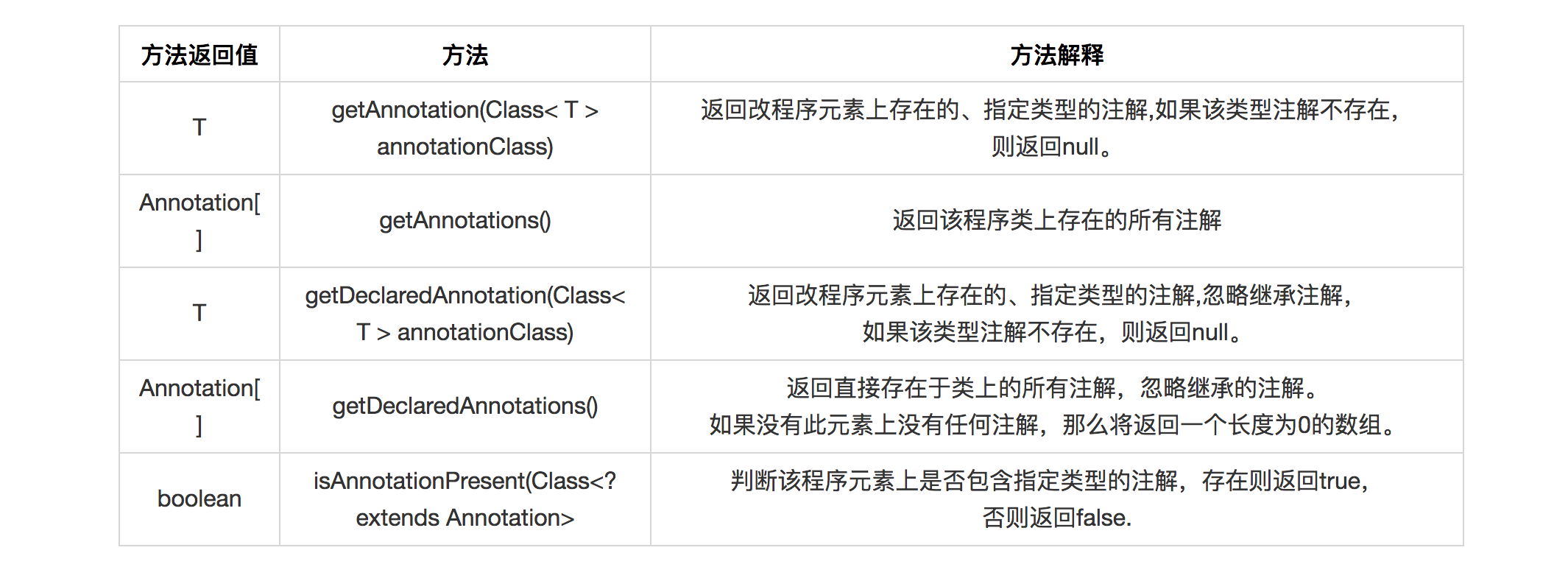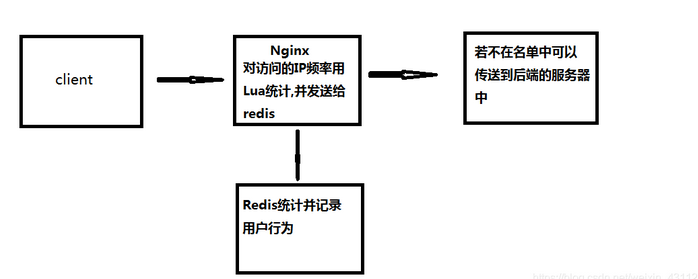深入理解Java自定义注解(二)-使用自定义注解
java的注解处理器类主要是AnnotatedElement接口的实现类实现,为位于java.lang.reflect包下。由下面的class源码可知AnnotatedElement接口是所有元素的父接口,这时我们通过反射获得一个类的AnnotatedElement对象后,就可以通过下面表格的几个方法,访问Annotation信息。
public final class Class
implements java.io.Serializable, GenericDeclaration, Type, AnnotatedElement {
总结AnnotatedElement的常用方法 
注意:getDeclaredAnnotations和getAnnotations得到的都是当前类上面所有的注解(不包括方法上注解和属性上注解),不同的是,前者不包括继承的。而getAnnotations得到的是包括继承的所有注解。
注解处理器使用示例
新建自定注解@ReqMapping
import java.lang.annotation.ElementType;import java.lang.annotation.Retention;import java.lang.annotation.RetentionPolicy;import java.lang.annotation.Target;/*** Description:* Created by gaowei on 2018/1/3.*/@Target({ElementType.METHOD,ElementType.TYPE})@Retention(RetentionPolicy.RUNTIME)public @interface ReqMapping {ReqMethod [] method() default {};String[] val() default "";}
新建一个枚举类
public enum ReqMethod {GET, HEAD, POST, PUT, PATCH, DELETE, OPTIONS, TRACE}
新建自定义注解@ReqValue
import java.lang.annotation.ElementType;import java.lang.annotation.Retention;import java.lang.annotation.RetentionPolicy;import java.lang.annotation.Target;/*** Description:* Created by gaowei on 2018/1/4.*/@Target(ElementType.FIELD)@Retention(RetentionPolicy.RUNTIME)public @interface ReqValue {String value1() default "";String value2() default "";}
使用自定义注解
@ReqMapping(method = ReqMethod.POST,val = "类")public class User {@ReqValue(value1 = "张三")private String userName;@ReqValue(value2 = "密码")private String pswd;@ReqMapping(method = ReqMethod.GET)public void get(){}@ReqMapping(method = ReqMethod.POST)public void post(){}@ReqMapping(val={"a","b"})public void other(){}}
注解处理器测试
import java.lang.annotation.Annotation;import java.lang.reflect.Field;import java.lang.reflect.Method;/*** Description:* Created by gaowei on 2018/1/2.*/public class TestAnnotation {public static void main(String[] args) {Class<User> clazz = User.class;//获得clazz(User)里面所有方法信息Method[] methods = clazz.getDeclaredMethods();//获得clazz(User)里面所有属性信息Field[] declaredFields = clazz.getDeclaredFields();System.out.println("methods注解个数:"+methods.length);System.out.println("declaredFields注解个数:"+declaredFields.length);//遍历循环所有方法信息for (Method method : methods) {//判断method是否含有指定元素的注解if (method.isAnnotationPresent(ReqMapping.class)) {//返回当前方法上的注解对象ReqMapping reqMapping = method.getAnnotation(ReqMapping.class);//获得注解的值System.out.println("方法注解值:"+reqMapping.method());//如果一个注解有多个值,通过遍历取出(特别注意:reqMapping.val(),这个val()是你定义注解的成员)String[] values = reqMapping.val();for (String value : values) {System.out.println(value);}}}//获得类里面所有方法的注解信息for (Field declaredField : declaredFields) {if(declaredField.isAnnotationPresent(ReqValue.class)){ReqValue reqValue = declaredField.getAnnotation(ReqValue.class);System.out.println("属性注解值:"+reqValue.value1());System.out.println("属性注解值:"+reqValue.value2());}}//获得类上的所有注解Annotation[] declaredAnnotations = clazz.getDeclaredAnnotations();for (Annotation declaredAnnotation : declaredAnnotations) {System.out.println("类注解值:"+ declaredAnnotation);}}}



































还没有评论,来说两句吧...